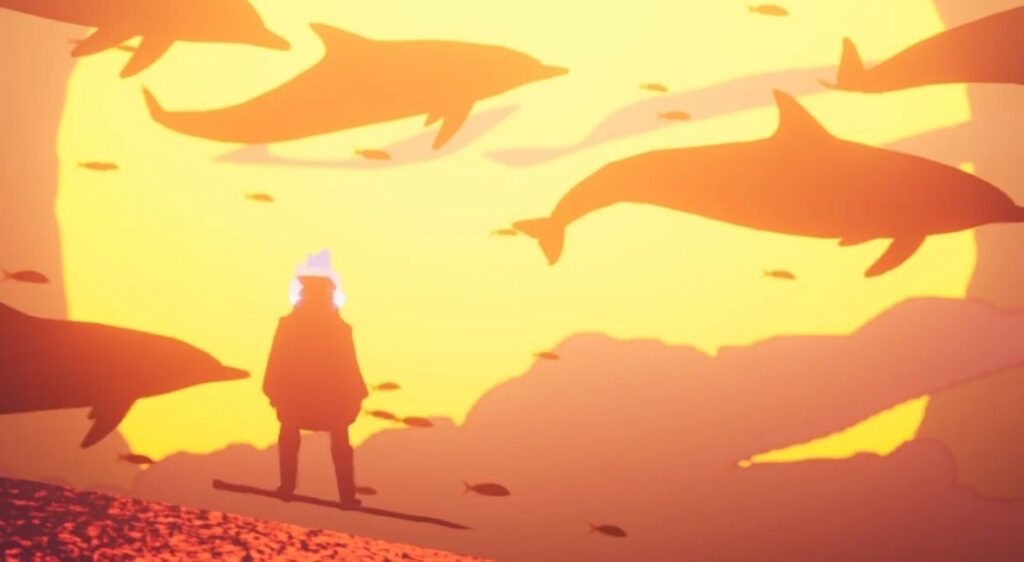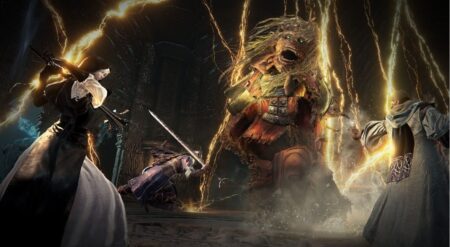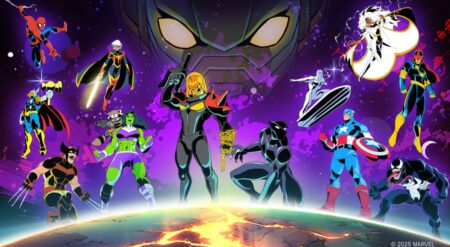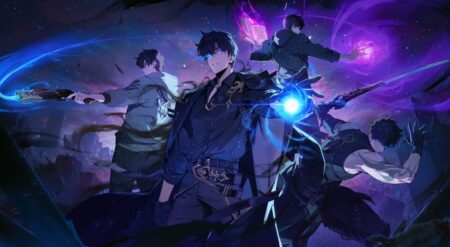Giant Squid, the indie studio behind ABZÛ and The Pathless, is gearing up to release Sword of the Sea. The latest addition to their credits, Sword of the Sea is a new atmospheric surfing adventure that continues the studio’s tradition of unique artistic design, captivating scores, and above all else, exploration.
For Summer Game Fest Play Days, we went hands-on with the title and wrote a preview. Now that I’m sitting here writing my review, my investment in this title has only deepened. If there is a game I have lost myself in completely this year, it’s Sword of the Sea. It effortlessly calls you to explore and lulls you into its world, rewarding you for every turn you take off the beaten path.
In the game, you play as the Wraith, resurrected in the desolate Necropolis, and your sword is no longer used for fighting. Instead, you use it to surf across the sands and sea, as you bring life back to the world. Everything about the game’s environment feels ancient, as does the water and sea creatures you call forth.
I hesitate to call the shifting dunes desolate, as pieces of the world’s past jut out, revealing themselves more as you keep progressing through the story. You explore sinking tombs and skatepark-inspired ruins inspired by Italian Renaissance and Islamic architecture, surfing their walls, jumping higher and higher as you ride the half-pipes that time has created.
Giant Squid’s Sword of the Sea understands movement and what makes traversal special.

Sword of the Sea’s world is lonely, but it’s never empty. Wide open spaces somehow still carry hidden pasts and cultures, and instead of finding boredom, all you feel is curiosity. While the core of the game is to bring life back to the world around you, essentially fighting climate change, if you ask me, I found myself more called to know everything I can about the world I was surfing through.
As you explore the world, you solve environmental puzzles along the way, all of which are intuitively designed. Without overlays, Giant Squid is trusting you to understand the world around you, and that makes every point of navigation all the more fulfilling. Using a vibrant color language, Sword of the Sea tells you and shows you exactly what you need to do while also rewarding you for trying things out.
In some puzzles, you build momentum in a halfpipe and pull off inventive platforming to find the release point for the water. In others, you grind giant chains linking pillars. And in others, you find creative ways to string together different traversal movements through different environmental features to navigate your way through the land.
Even when you’re doing something wrong, you don’t ever feel like you’re failing, or like you’re lost. While some are far too easy, Sword of the Sea is one of the few games where I didn’t want things to be harder. When it comes to exploration, puzzles, and platforming, I want it to be difficult. I want to fail and feel the reward of finally overcoming something.
Bringing life back to an empty world is a quest worth taking.

Yet, the calmness that Sword of the Sea instilled in me as I played kept me invested, even when it was at its easiest. The reward and the dopamine hit just came naturally. It’s an effortless accumulation of experiences that made me feel like I was a part of something bigger. This feels like the game’s second purpose. The first is just nailing great surfing mechanics, and the second is connecting you to something larger.
To the first point, Sword of the Sea’s most tremendous success is its intuitive level design and thoughtful control schemes. They iterate on classic speed-based skating and snowboarding games. This combo makes the game easy to understand, but slightly more challenging to complete the further you get. You need to connect everything you’ve learned to succeed.
The traversal mechanics are so seamless that as your speed picks up and you know how to navigate the different environmental triggers, it all just feels second-nature. As you move through the world, you carve your way across the environment on an ancient and powerful weapon. But the Hoversword isn’t a weapon anymore, it’s a vehicle that delivers fluid movement between jumps, flips, and grabs.
You rely on it, the land, and pulling your body in to build momentum and launch yourself across gaps, over dunes, and ultimately find a way through vertical environmental puzzles to complete your quest. The shifting tones between precision and speedy fun are balanced extremely well, but even when I was just in the open dunes with nothing, it felt good.
Giant Squid’s focus on building intuitive systems and environments pays off in spades.

Sword of the Sea puts you into a flow state that you don’t want to leave. It’s special, the game’s ability to shift from weighty action as you grind walls and chains into something more meditative as you coast on open sand or sea.
As you progress, sandy dunes transform into glittering, emerald waters, and magical sea life returns in breathtaking shoals. This brings a spiritual magic to surfing as you connect with nature and restore life. The joy you feel bringing water to a land once void of it is hard to define. It’s ultimately a simple mechanic, but it lends way to so much more.
Right now, as the world’s climate crisis gets more dangerous and natural disasters happen more and more, it’s easy to feel helpless. To be honest, I’d wager that I feel hopeless and helpless more days than I don’t. Playing a video game doesn’t fix the world, but it lets me feel like I am doing something, even if it isn’t real. There is a sense of relaxation that comes with Sword of the Sea’s simplicity, but there is also total immersion.
The sand moves, the water moves, there isn’t a single part of this world that doesn’t feel alive. And when you realize that everything around you, including the sand, holds beauty and life, you know you aren’t alone. Sword of the Sea captures the beauty of nature, but more importantly, that we are responsible for it. The investment that the game builds with you each time you see new animals join the world in all their whimsy keeps you playing.
Sword of the Seas’ message is just that there is something “after” and that’s what makes it important.
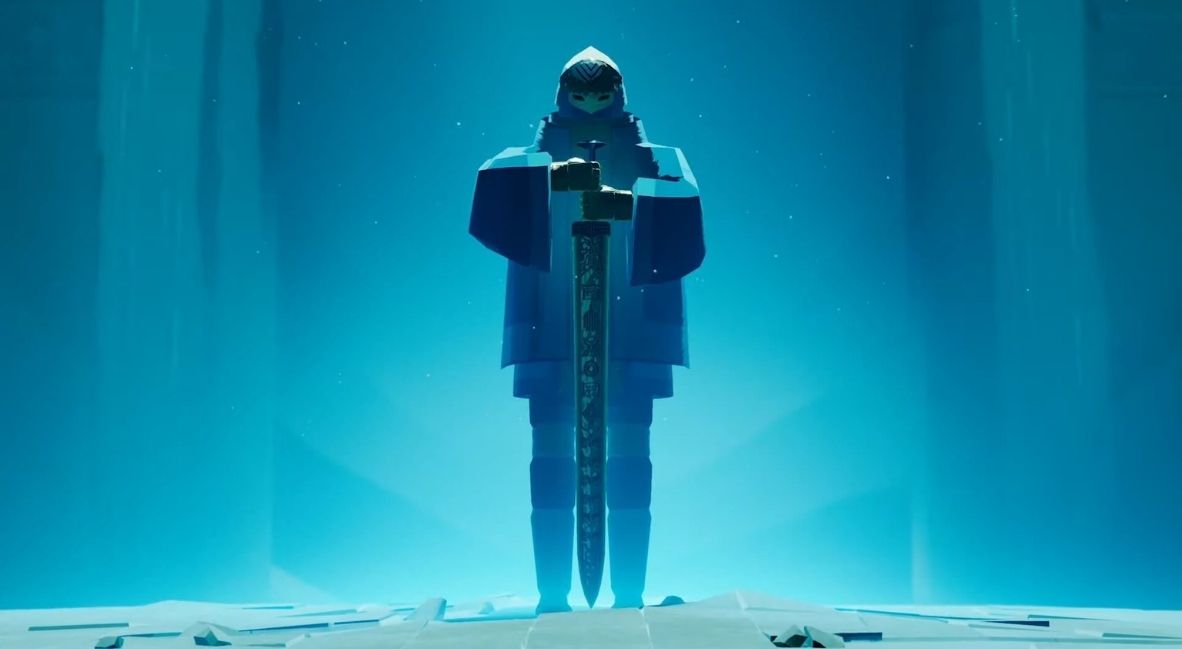
As I played through Sword of the Sea, I kept in the back of my mind my interview with the game’s Creative Director, Matt Nava. When I asked Nava about the game’s message, he responded:
“I believe that all the current events got me thinking about what happens at the end of all this, what happens when all the wars are fought and all the wars are done? What’s the sword for? What do you do with them, and what’s your identity after all that? I think that’s the kind of question the game is trying to explore. The character is this warrior, and now he’s got to do something new because there’s nobody to fight anymore.”
That’s a potent message for the world right now. What do we do when we’re done fighting, even if right now it feels like it will never end? The answer is to be kind, be connected, and save things. You can’t keep fighting indefinitely, even if you’re a warrior. Sword of the Sea has the strength to tell its players that there can be something after all the darkness. And sometimes, the only way to have people put down their swords is to show that there is another way.
Whether it’s the game’s not-too-subtle commentary about climate change or Nava’s explanation of the Wraith, Sword of the Sea is trying and succeeding at making an impact. No singular thing can change the world, but it can plant a seed, and with this title, I hope everyone feels hopeful for a time to rebuild.
Sword of the Sea is available now for PlayStation 5 and PC (via Steam and the Epic Games Store).
Sword of the Sea
-
Rating - 10/1010/10
TL;DR
Whether it’s the game’s not-too-subtle commentary about climate change or Nava’s explanation of the Wraith, Sword of the Sea is trying and succeeding at making an impact

